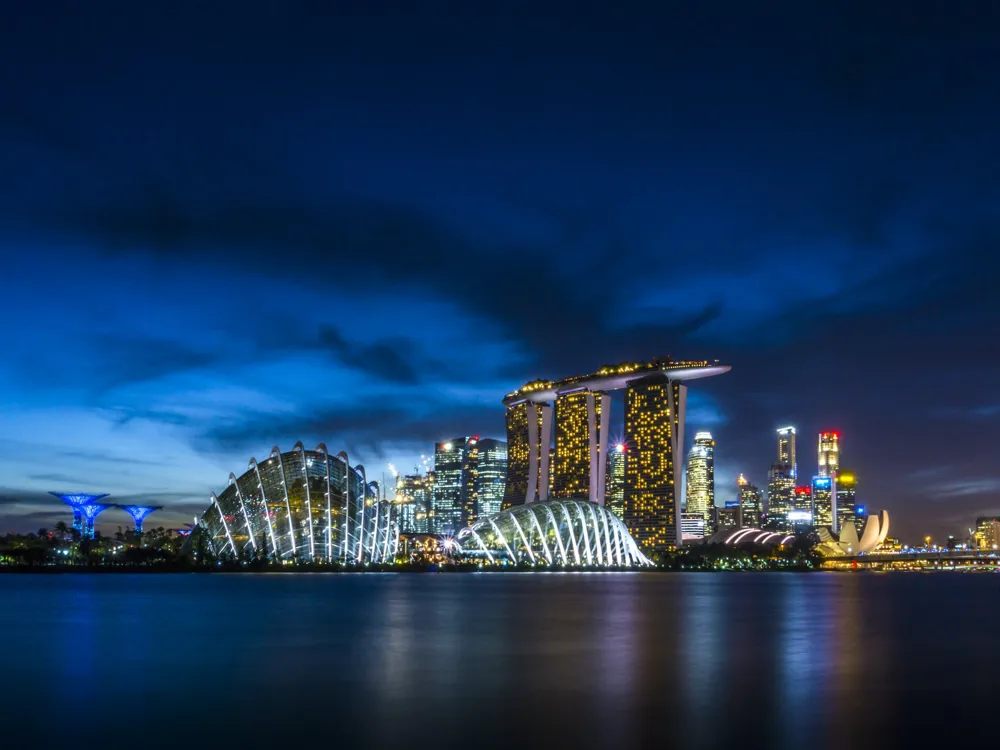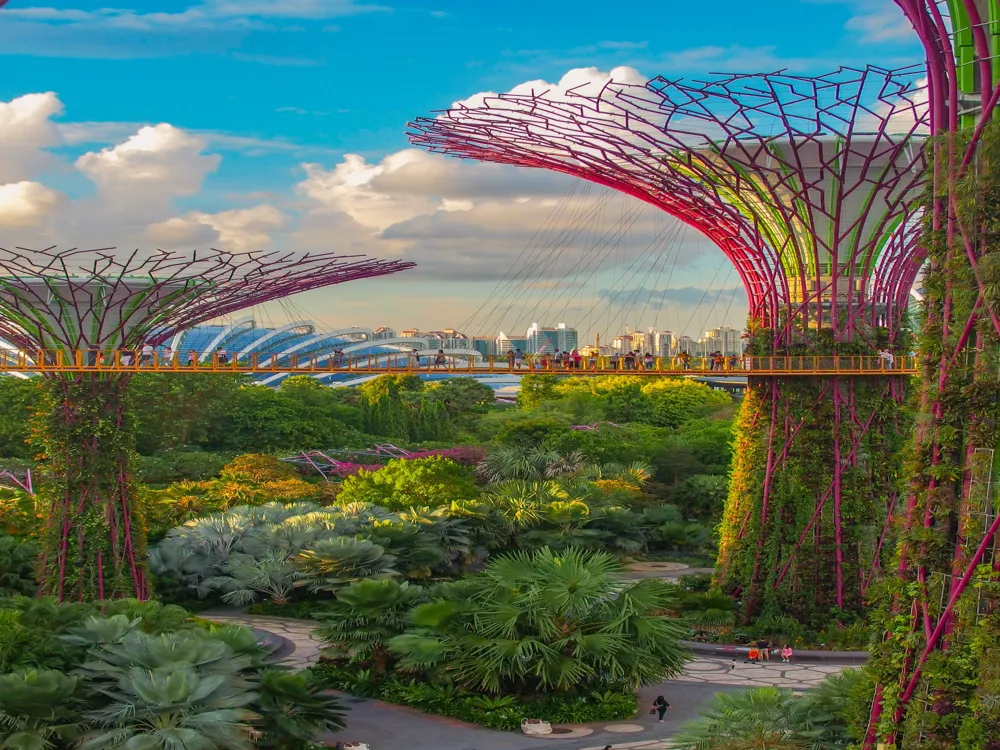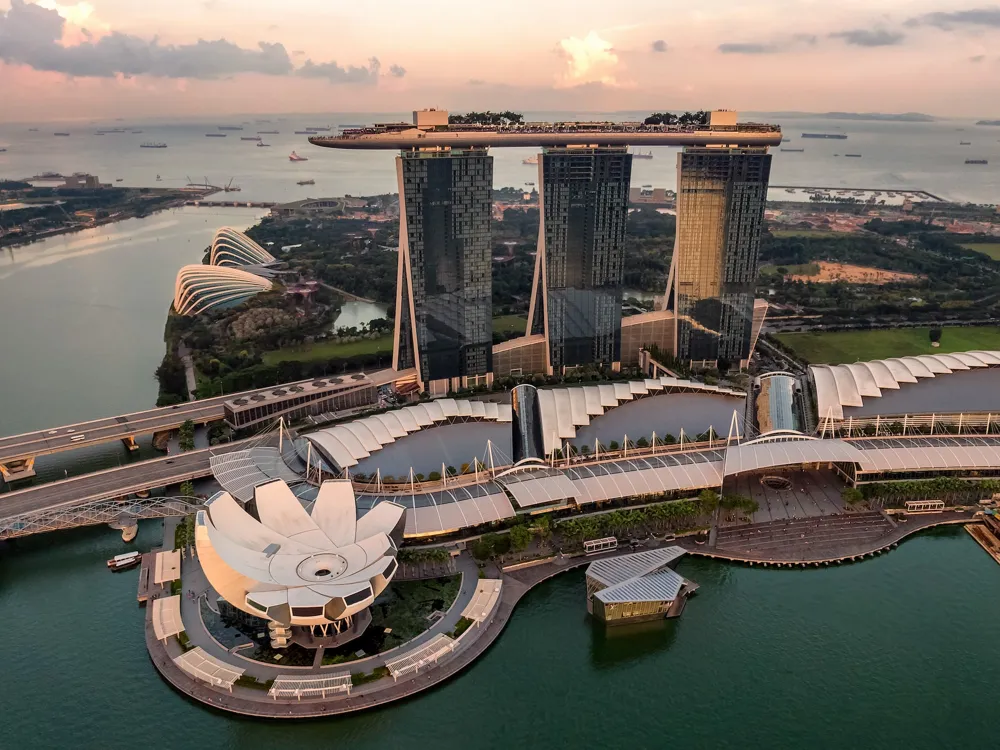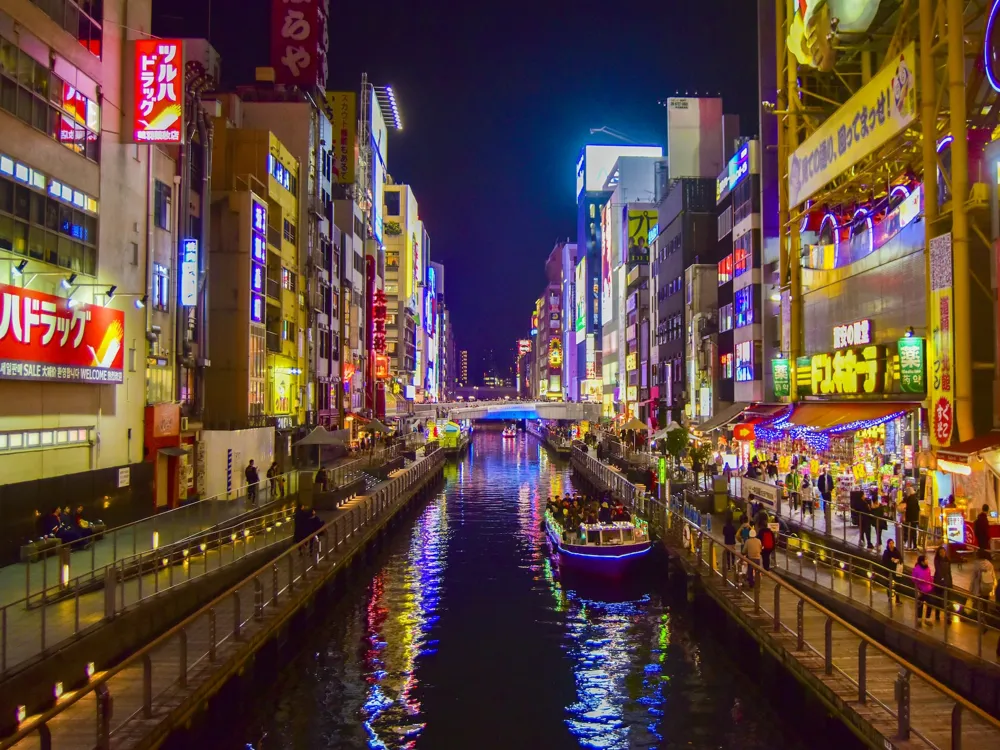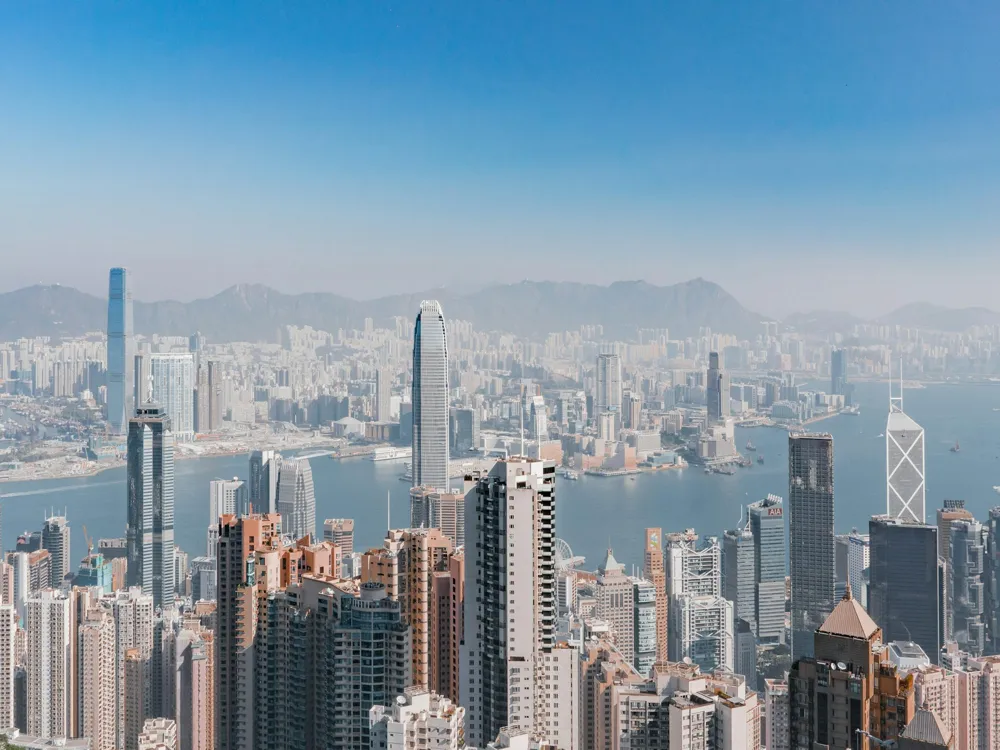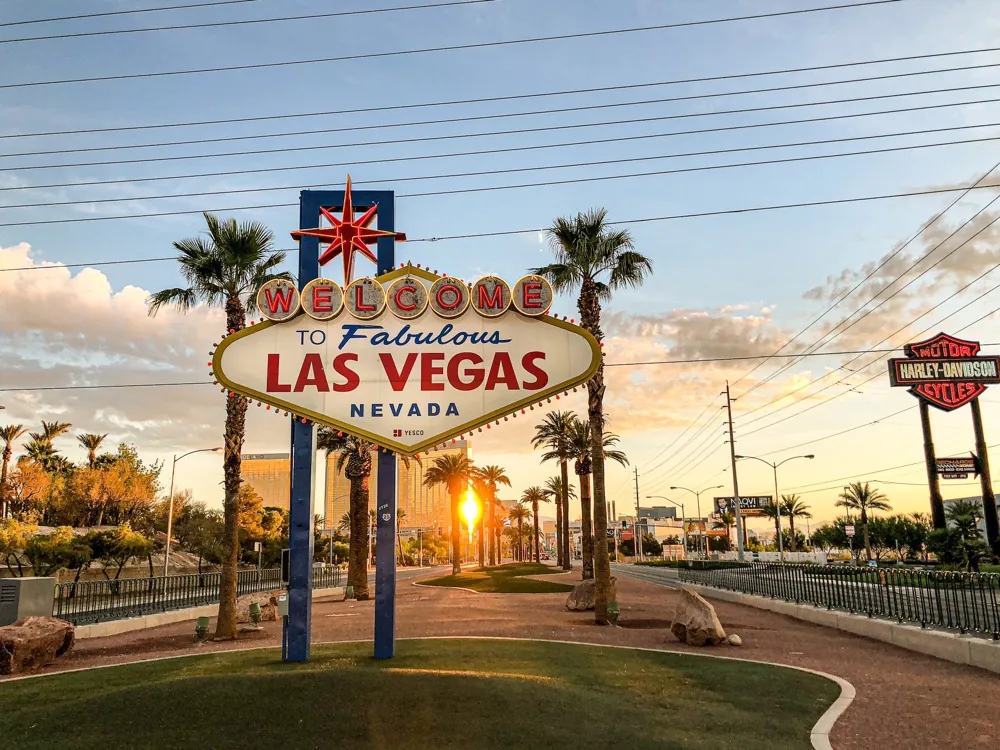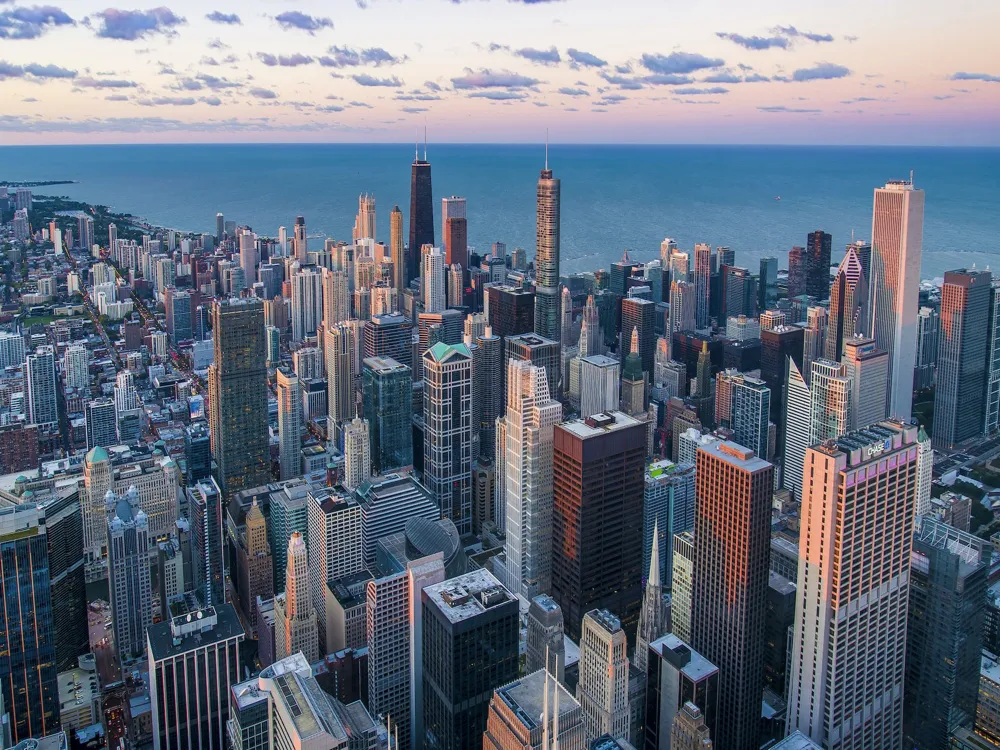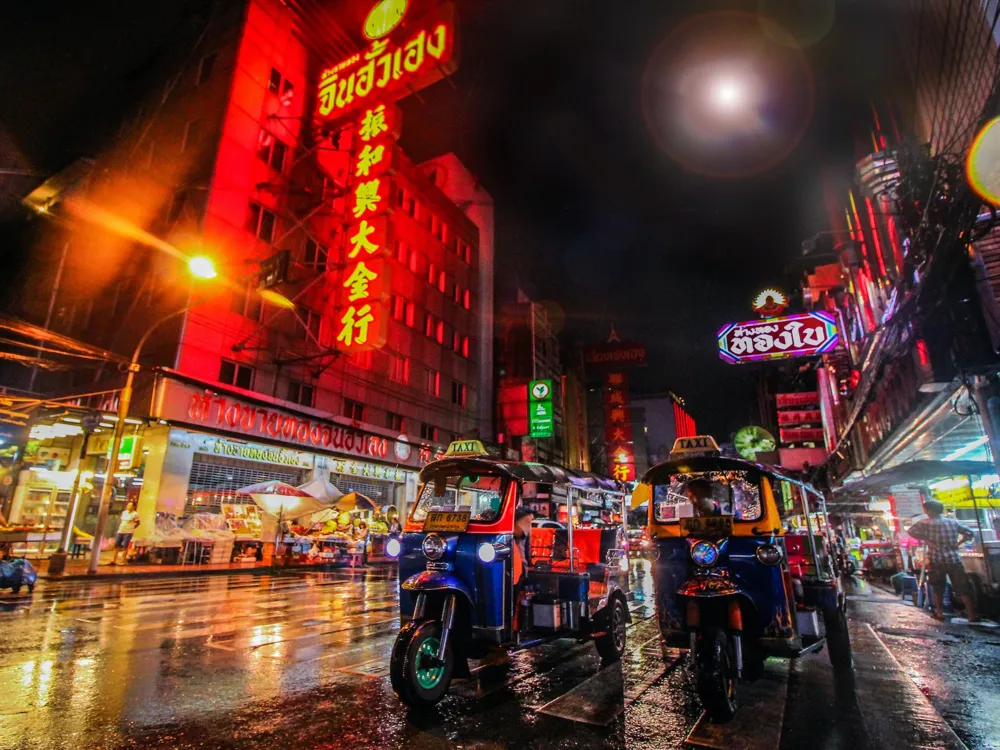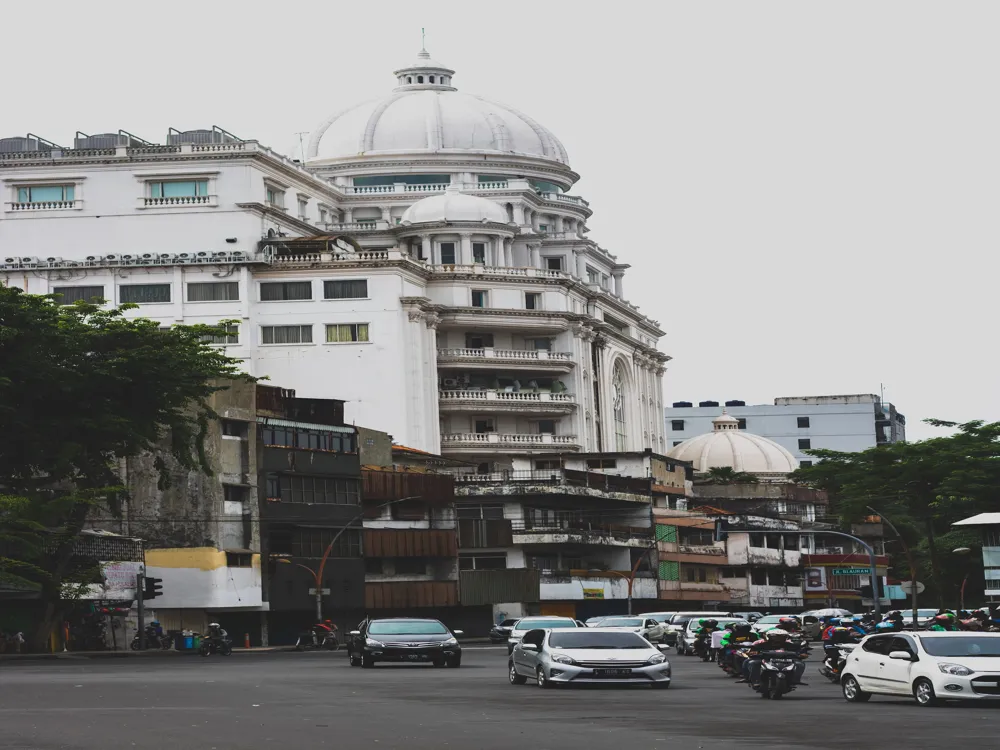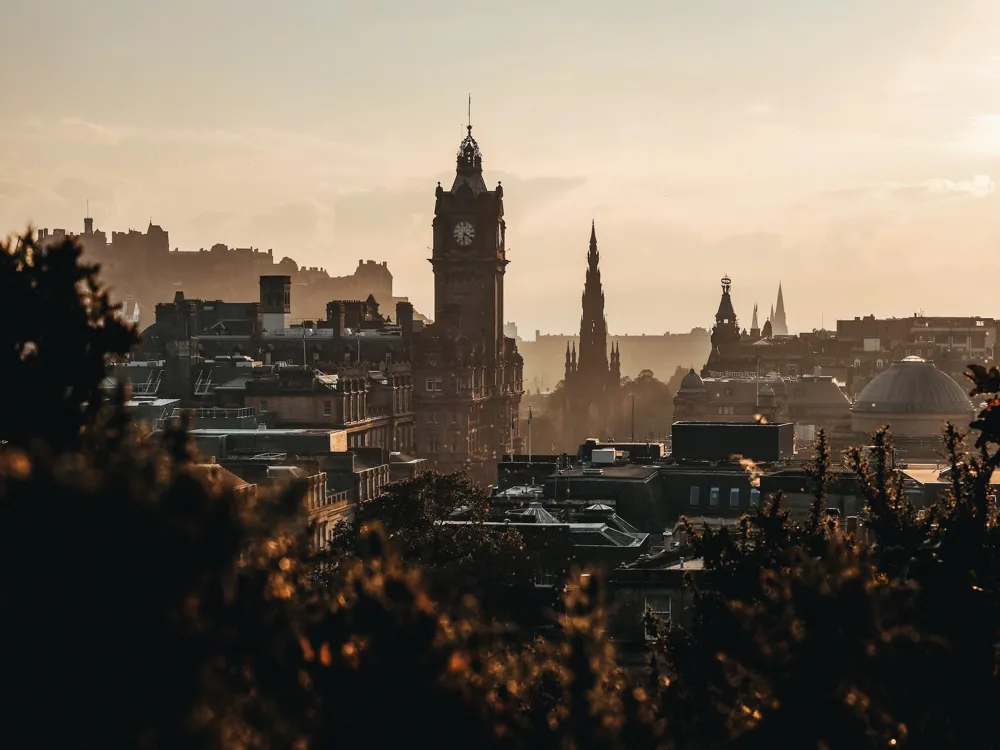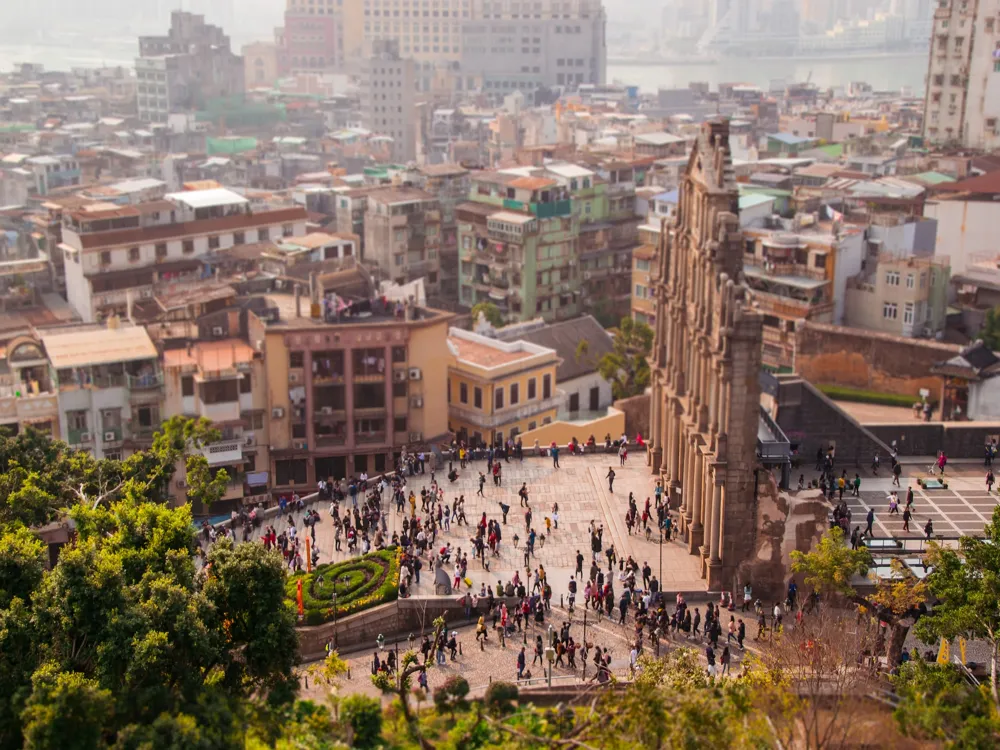Plan Your Travel To Singapore
Places To Visit In Singapore
The Arts House Singapore
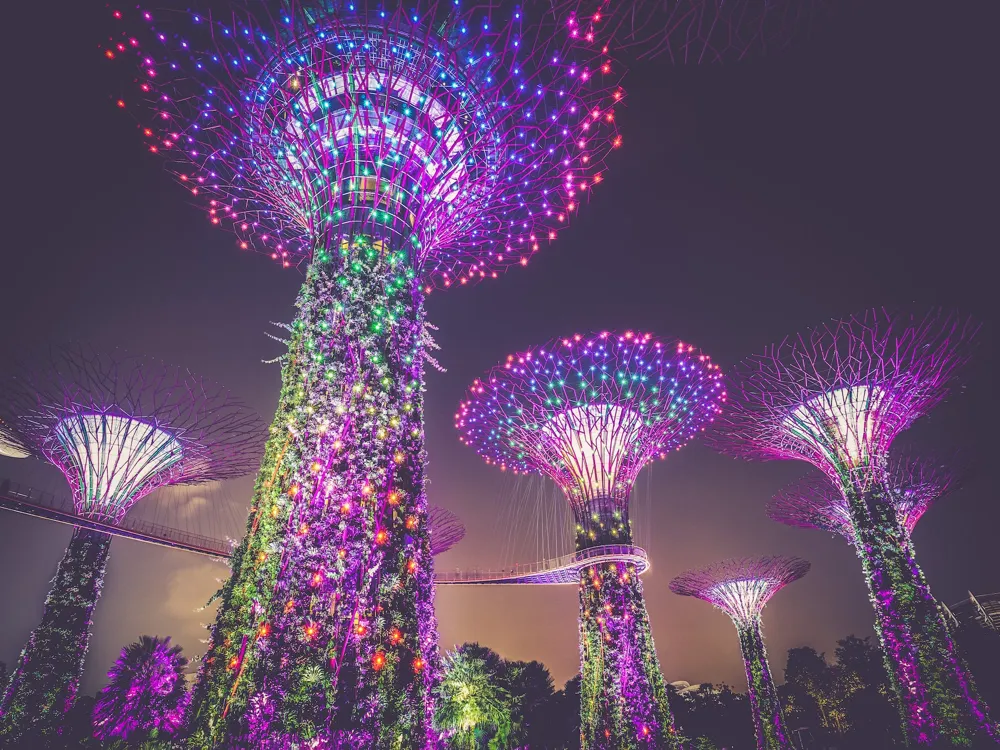
The Arts House is a venue for literary, performing, and visual arts located at Old Parliament Lane, Singapore. Known to the locals as the Old Parliament House, the Arts House occupies the 200-year-old building that housed Singapore’s first parliament. Now a gazetted national monument, this space presents a brilliant juxtaposition of colonial architecture, historically significant venues, and the performing arts.
Originally built in 1827 as a residence, the Arts House building has undergone numerous changes in design from Tuscan/Palladian styles to Victorian. The architectural integrity and brilliance of design are only rivalled by the art shows and exhibitions regularly conducted at the venue – ranging from film festivals, painting exhibits, theatre performances, and recitals. The Arts House Singapore is a must-visit for history buffs looking to learn about the country’s colonial past, and nifty tourists on a budget – entry to the venue is free.
Read More
The Battlebox
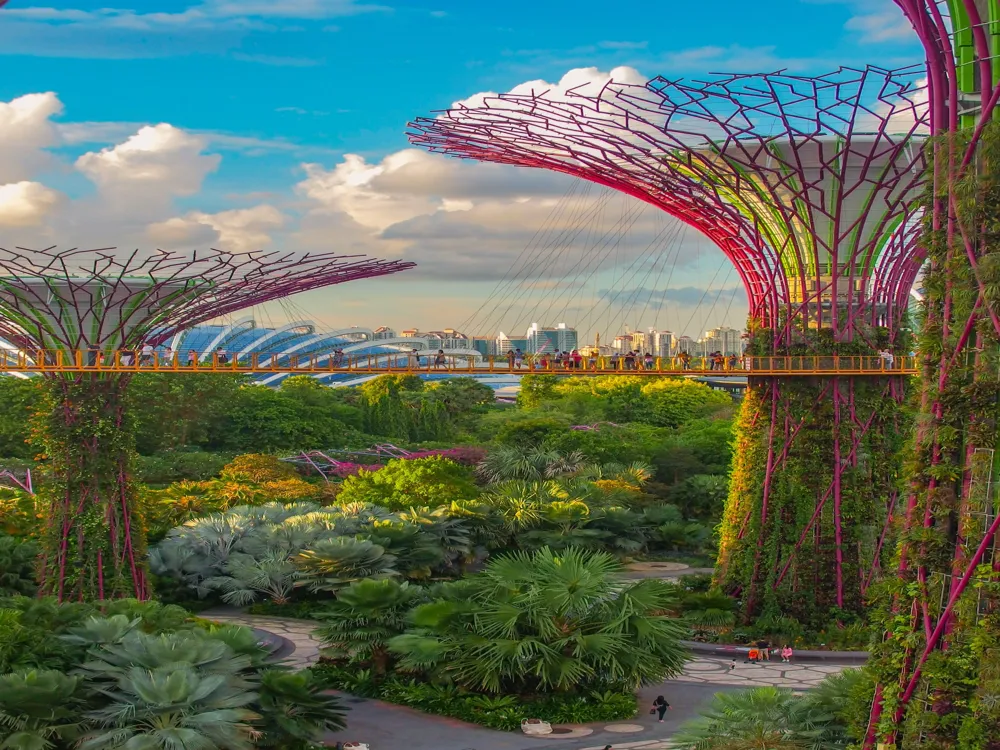
The Battlebox is a war bunker dating back to World War II, now converted into a museum. Located at Fort Canning Hill, this former bomb-proof command centre/shelter is regarded as one of the prime touristic spots in Singapore, also known as Fort Canning Bunker. It was inside the walls of Battlebox that the British decided to surrender Singapore to the Japanese. Now, the Battlebox museum unveils true causes that led to the disastrous and largest capitulation in British History.
Entry to the Battle Box is exclusively through guided tours, which are conducted daily. There are two entrances to The Battle Box that also boasts of 27 rooms. Built 30 feet beneath the Fort Canning Hill, the BattleBox was constructed with reinforced concrete walls as three feet to withstand direct hits from bombs and shells. Since World War II, the Fort Canning Bunker was looted in the aftermath of the Japanese surrender and sealed closed due to safety concerns. Its location was also forgotten until a journalist rediscovered the remains and brought the museum back into the public eye. The Fort Canning Bunker later developed into a museum, representing the final days of the Battle of Singapore. The name BattleBox was given and formally opened in the year 1997, on the 55th anniversary of the surrender of Singapore.
Read More
The Intan
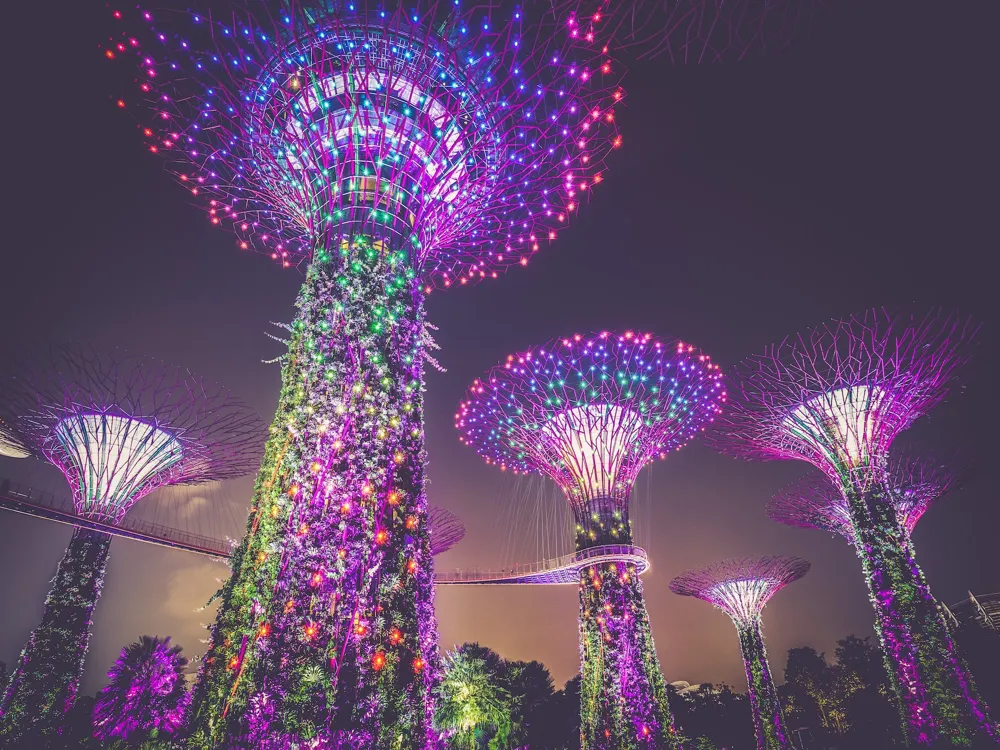
The Intan is an unconventional museum that preserves all things Peranakan over 20 years now. Extremely famous for its signature tea experience, the Intan is concealed in a Joo Chiat Terrace House. Visitors especially come here to witness the Peranakan tea culture which the Intan museum-cum-house perfectly does justice to. It is a must-visit to have a sneak-peek into the grandeur of the heritage and way of living of the Peranakans.
Alvin Yapp, the curator of the Intan (meaning a rose-cut diamond in Malay) dedicated his home to his passion for the Peranakan culture and converted it into a splendid museum which is a spectacular concoction of Singaporean artwork and modern interiors. Since this place is a house converted into a museum, it does not have signs and placards for each artefact. Alvin himself gives his visitors a tour around his home, excitedly sharing information about his collection. He gladly answers all the doubts and questions about the collection and Peranakan culture along with recalling stories of how an artefact was acquired and its significance in the home. Alvin's tour sessions are more of a conversational experience than informational.
Read More
Raffles Hotel Singapore
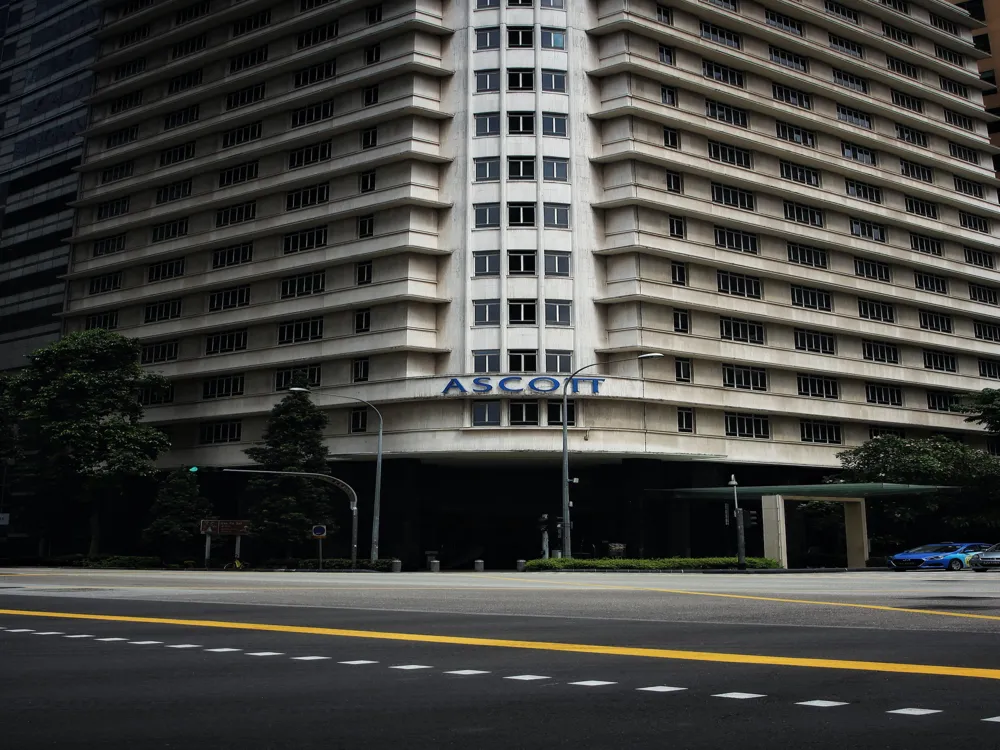
One of the most famous and iconic hotels in Singapore, the Raffles Hotel is on the top of almost every visitor’s to-visit list in Singapore. Located in the Colonial District of Singapore, it is claimed to be one of the world's last majestic 19th century hotels.
Having served as a landmark of Singapore for over a century, the Raffles Hotel boasts of 15 restaurants and bars including the Long Bar where the renowned cocktail Singapore Sling was made. This historic structure epitomizes luxury through its graceful architecture while the tropical gardens flanked around the hotel add to its refined setting. The lobby of the main building is open for the public whereas the museum is located on the 3rd floor. Club your visit to the Raffles Hotel with a visit to the historic Raffles Landing Site.
Read More
Singapore Zoo
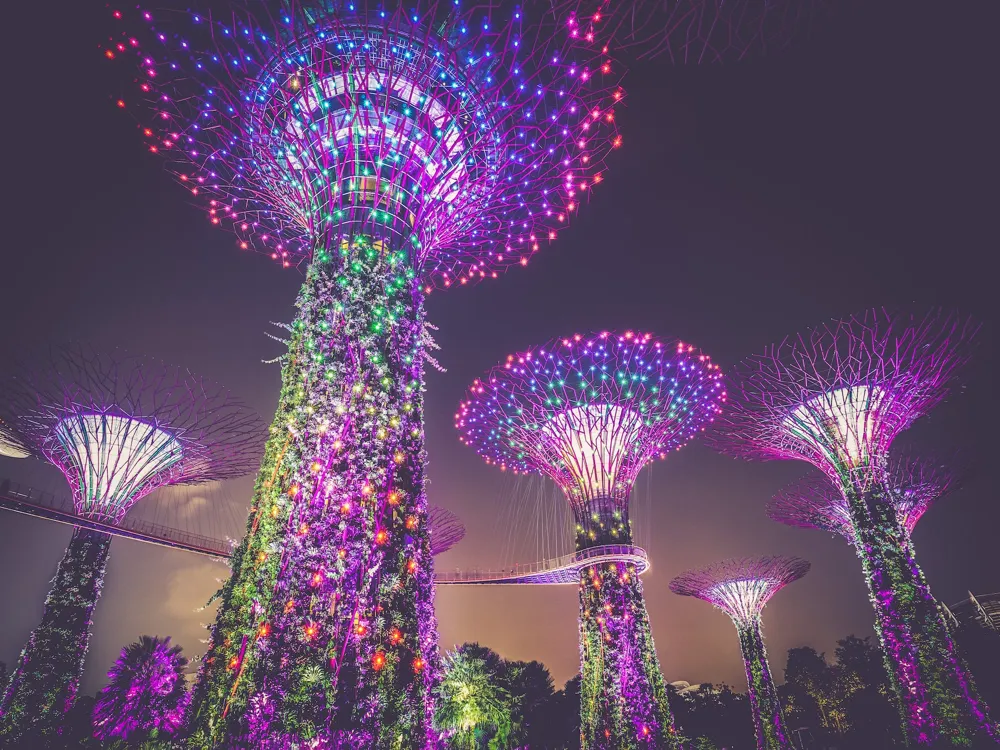
Regarded as one of the best zoos in the world, the Singapore Zoo is spread across a vast area of 70 acres in the Upper Seletar Region. Formerly known as the Singapore Zoological Garden or Mandai Zoo, it is famed for housing the largest captive colony of Orangutans in the world. Another major highlight is the Rainforest Kidzworld, a technicolour play area for the little ones.
Accommodating around 315 species, 16 per cent of which are considered endangered, the Singapore Zoo is divided into 11 zones. Attractions at Singapore Zoo include Fragile Forest (a bio-dome replicating the environs of a rainforest), Great Rift Valley Exhibit (home to exotic species like Nubian ibexes, black-backed jackals, banded mongoose, complete with cliffs and a waterfall), a replica of Ethiopian villages, and encounters with free-roaming butterflies, Malayan flying foxes, two-toes sloths and a myriad of other wildlife.
Read More
Thian Hock Keng Mural
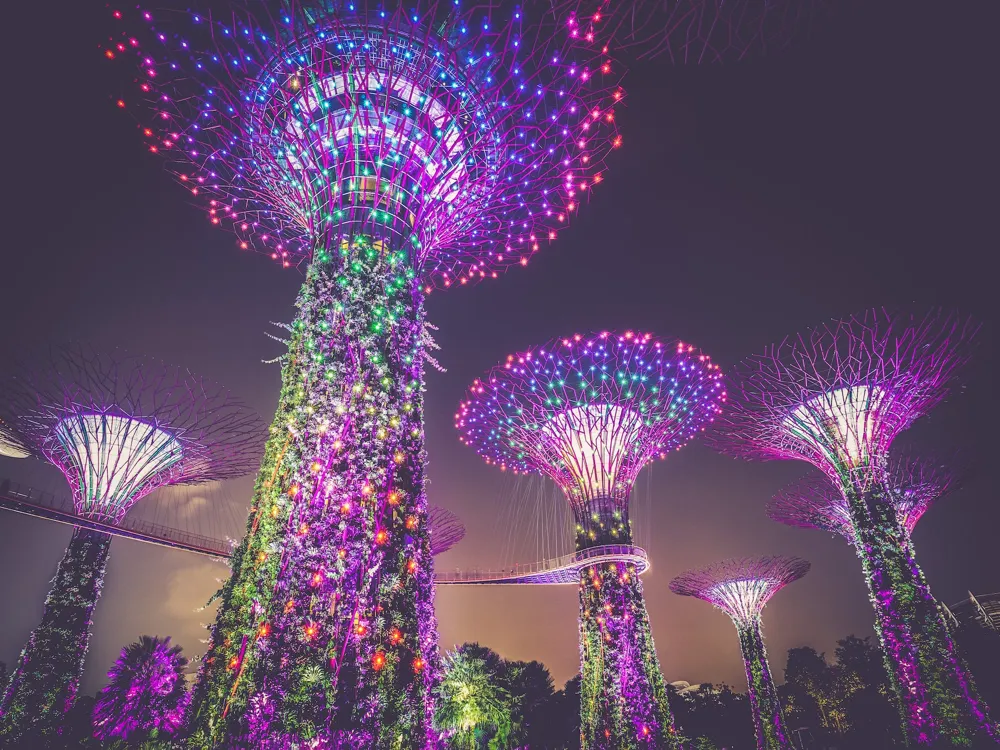
The Thian Hock Keng Mural is a 40m long painting on the rear wall of the iconic 177-year-old Thian Hock Keng Temple. A gorgeous work of art displaying fine craftsmanship, the Mural tells the story of the early Hokkien immigrants of Singapore, right from the very beginning. Read from right to left, it beautifully depicts the struggles of the early immigrants, the pain they had to go through when they left their families behind in China, and the hard work and labour they put into building the Singapore we see today.
The Thian Hock Keng Mural was painted by Yip Yew Chong and was commissioned by the Singapore Hokkien Huay Kuan. It was unveiled by Minister Gan Kim Yong at the opening ceremony of the Singapore Hokkien Festival in 2017. The painting has mostly been done in tones of sepia, although bright colours have been used to depict flowers, balloons, lanterns, birds, special figures like statues of Gods and special events. Visitors can also use a special app called LocoMole and view the Mural in augmented reality. The best time to view this magnificent Mural would be on 'Car Free Sundays', which are regularly organized. On these days, the entire mural can be viewed in its complete glory, as there are no cars parked in front of it to hinder the view.
Read More
Thian Hock Keng Temple
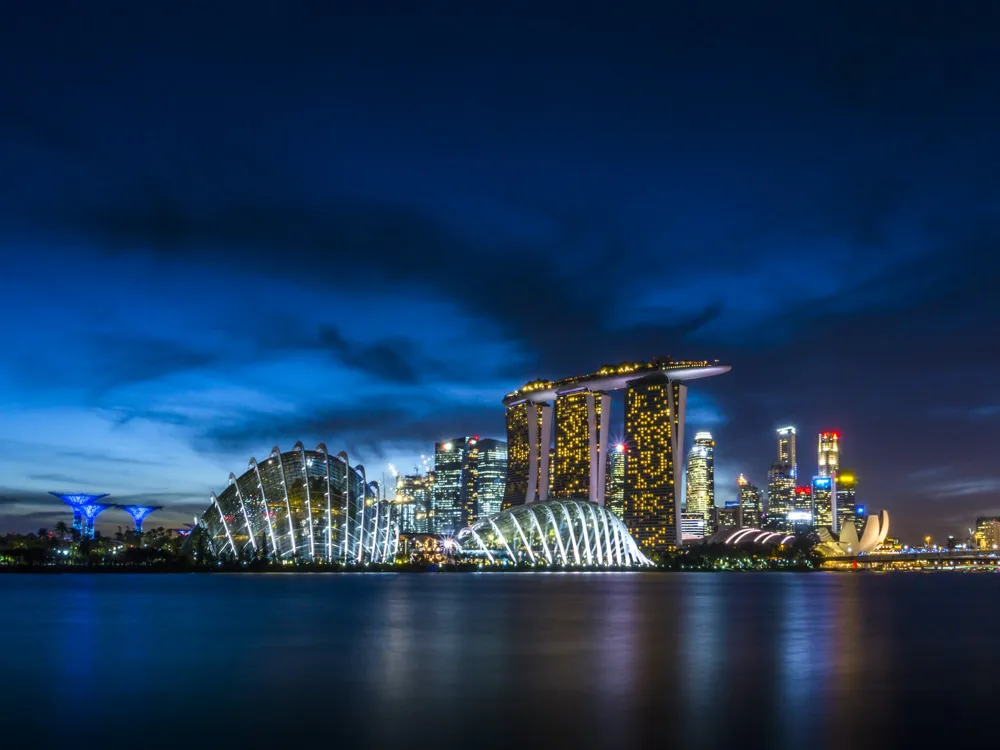
The Thian Hock Keng Temple is Chinatown's oldest and most important Hokkien temple, translating into a 'Palace of Heavenly Happiness. Also known as Tianfu Temple, it was built for the worship of Mazu, a Chinese sea Goddess. A tranquil refuge, the beautiful temple features highly symbolic architectural designs: the stone lions standing at the entrance supposedly ward off evil spirits, and phoenix and peony paintings (in the central hall) epitomizes peace and good tidings.
Built between 1839 and 1842, the Thian Hock Keng Temple was a favourite landing point for Chinese traders and sailors. The seafarers and immigrants of the Hokkien community gave thanks to Mazu for a safe sea passage on their arrival to Singapore. While at the magnificent temple, soak in the traditional Chinese architectural elements - the glaring porcelain pieces adorning the roof ridges, intricate sculptures of dragons, Pheonix and deities. The other intriguing architectural marvels of Thian Hock Keng Temple are the Scottish gates and Dutch tiles.
Read More
Theemithi in Singapore
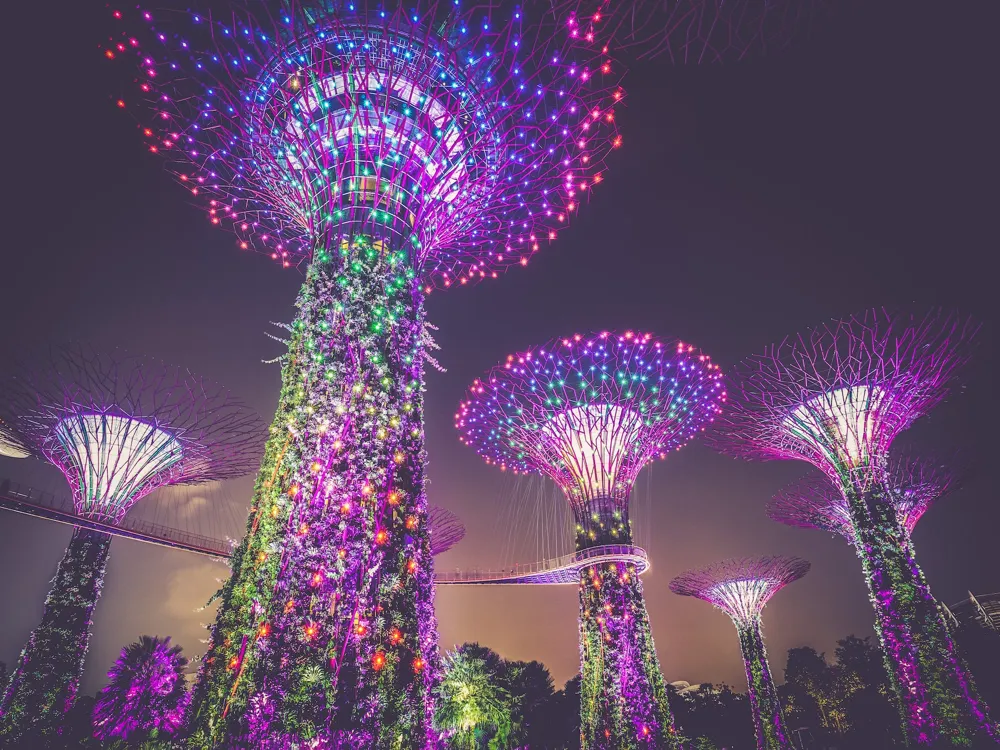
Originating in South India, Theemithi or Thimithi is a fire walking festival, celebrated a week-before Diwali. Celebrated in the honour of goddess Draupati Amman or Draupadi, an incarnation of goddess Mariamman, Thimithi is celebrated with big pomp and show at the Sri Mariamman Temple of Singapore.
Thimithi is basically a small part of a larger ceremony which stretches over two months. During this period, various scenes of the great epic Mahabharata is re-enacted by hired drama troupes who are accompanied by the devotees. Thimithi falls on the month of Aipasi of the Tamil calendar which is usually a week before the Festival of Lights, Deepavali. In Singapore, the fire-walking ritual begins at Sri Srinivasa Perumal Temple all the way through to the Sri Mariamman Temple.
Source
The birth of Thimithi
Draupadi was a charming princess who was married to five Pandava brothers. From the revered queen, she turned into a scapegoat when she was dragged to the court of the Kauravas and harassed after her husbands lost her in a gambling game of dice. Following the tragic incident, Draupadi took an oath not to comb her hair until she cleansed her tresses with the blood of one of the Kauravas. The Pandavas, in a fit of rage, waged one of the most destructive wars against the Kauravas and killed them all in the Kurukshetra War.
Draupadi was accused of being the sole cause of the horrific bloodshed even though there were several other factors which had led to the war. However, the catastrophic war was not the end of misfortune in the Mahabharata. Draupadi was made to walk on burning cinder to prove her chastity and fidelity, and purify herself of all that had defiled her. She passed the fire unscathed and proved her virtue. Since then, the devotees of Draupadi have been worshipping the deity by going through what she had to face and dedicating the day of Thimithi to her.
Source
When is Thimithi celebrated in Singapore?
Falling in October or November, Thimithi is celebrated every year in a festive manner. In 2019, this religious festival is to be celebrated on the 20th of October.
How is Thimithi celebrated in Singapore?
The ceremonies of Thimithi last for around two and a half months and are conducted in the magnificent Sri Mariamman Temple of Singapore. On the first Monday of the month Aadi of the Tamil calendar, which corresponds to July or August in the Gregorian calendar, the ceremony commences. To mark the beginning, a huge flag with a picture of Lord Hanuman is hoisted within the premises of the temple. For the next two days, scenes from the Mahabharata are enacted in the evenings. Following this tradition, a symbolic marriage ceremony between Draupadi and Arjuna is conducted in a beautiful, elaborate manner.
Before the new moon of the next month Purattasi, corresponding to September and October, the Aravana Puja is conducted to honour Arjuna's son, Aravana for sacrificing himself to the Gods to ascertain the triumph of the Pandavas in the war. The devotees plant a trident beside the shrine of Aravana to commemorate the war that lasted for eighteen days. A grand chariot procession is conducted around Bukit Tamah and Telok Blangah on the weekend prior to a month of the main festival. Keesaka Samharam is an important rite which takes place about a month before Thimithi. This ritual portrays the death of Keesaka, who was slain by Bheema due to his attempts of seducing Draupadi.
Source
As the day of the fire-walking ceremony closes in, the worshippers carry milk pots to the temple and perform Kumbiduthandam, which signifies prostrating after every three steps. Angapirathatchanam, which means rolling around the complex of the temple, is also a common ritual among the male devotees. On the day of the main festival, the grand fire-walking ceremony takes place after the initial prayers and rituals. Later in the evening, a silver chariot procession solely dedicated to Draupadi is taken out through the city to allow the devotees to offer their prayers and seek blessings.
Even though the festival reaches its crescendo with the fire-walking, Thimithi is terminated two days later, during which the final chapter of the Mahabharata is recited and the triumph of the Pandavas is portrayed by hosting a crowning ceremony of the eldest Pandava, Yudhishthira. As the festival ends, the flag is also lowered.
Source
Highlight of the Thimithi festival
The apex of Thimithi is undoubtedly the elaborate rituals of the fire-walking ceremony. In the morning, a fire pit, approximately three metres long, is dug within the premises of the sanctuary. In close proximity to the pit, the devotees dig a smaller pit into which milk is poured for the walkers to dip their feet in. The chief priest lights the fire with pieces of sandalwood and the coal inside the pit starts burning. After the initial ceremonies and prayers, the priest ties a yellow string to all the people participating in the fire-walking ceremony. The fire-walkers have to complete a mandatory walk from the Sri Srinivasa Perumal Temple to the Sri Mariamman Temple which lies at a distance of not less than five kilometres from the former.
The flames of the fire pit can rise up to four metres high, and it becomes difficult to even stand near it. Drums, conches, bells and cymbals fill the air with loud music. The tradition begins with the chief priest walking along the length of the pit with a pot filled with water, referred to as the karakattam, balanced on his head. He is followed by the male believers, each awaiting their turn to cleanse their souls. After the ceremony comes to an end, the fire is extinguished using water and milk.
Source
Where in Singapore is Thimithi celebrated?
Sri Mariamman Temple is beautifully embellished during Thimithi and is thronged by hundreds of worshippers on the day of the festival.
Located on the South Bridge Road in Chinatown, this holy place of worship can be reached by taking the bus 61, 166, or 197 and getting down at the bus stop right at the opposite side of the temple. If you prefer the MRT, you can embark on the one to Chinatown Station, take the Exit A which is only two minutes away from the temple.
Source
Thimithi is an unconventional festival celebrating the virtue and chastity of the Goddess Draupati Amman and every other woman in this world. It is a celebration of the victory of womanhood over the ones who attempt to defile her. The wonderful ceremony and the dedication of the devotees should surely be witnessed at least once in a lifetime. It is truly an unforgettable experience.
Read More
Thow Kwang Pottery Jungle
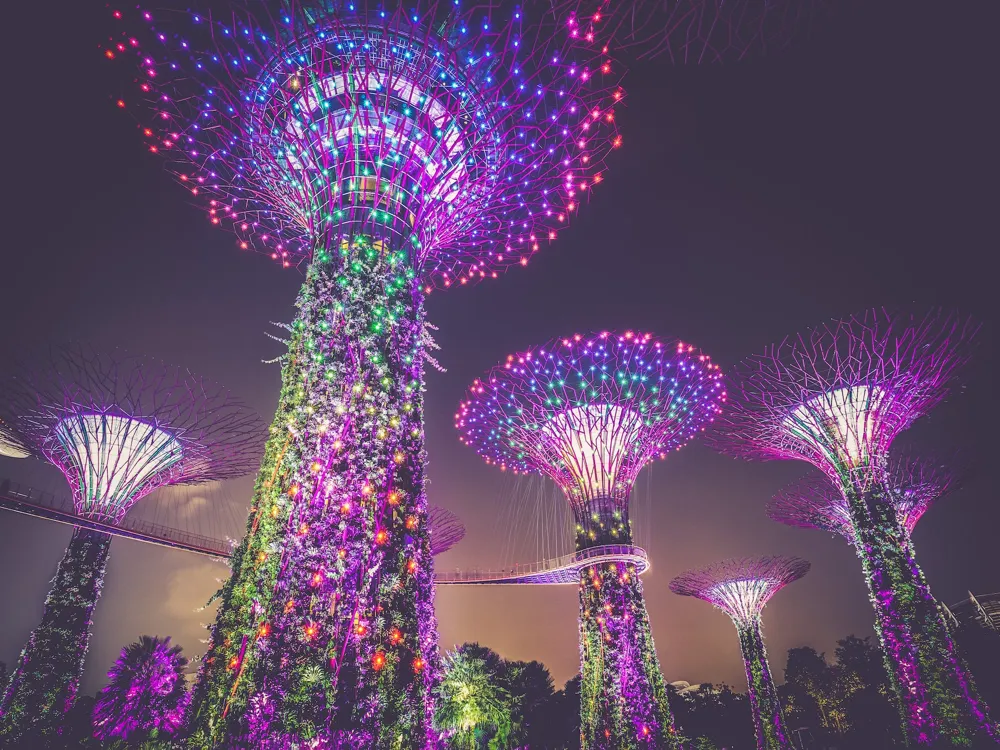
The Thow Kwang Pottery Jungle is a pottery studio and home to the oldest surviving dragon kiln in Singapore, located near Jurong Eco Park in West Singapore. Built in the 1940s, this studio hosts regular workshops for the whole family on pottery, archery, soap making, painting, and the art of wood-firing. Set in a quiet, rustic atmosphere, Thow Kwang Pottery Jungle is well worth a visit for anyone who wants to experience what Singapore used to be like before the trend of development and industrialisation set in.
The piece de resistance of Thow Kwang Pottery Jungle – the seventy-year-old Chinese dragon kiln – is 36 metres long, and shaped like a dragon. Built with strong bricks, the kiln is fired up a few times a year, enveloping up to 5000 ceramic pots in a river of fire and ash that produces an inimitably unique and colourful glaze. This traditional Chinese kiln is typical of the Teochew group and is a cultural icon. A variety of handmade ceramics are sold at the studio – from tiles, pots, vases, tea sets, and many more - and patrons have the opportunity to customize them too!
Read More
Tiger Brewery Tour
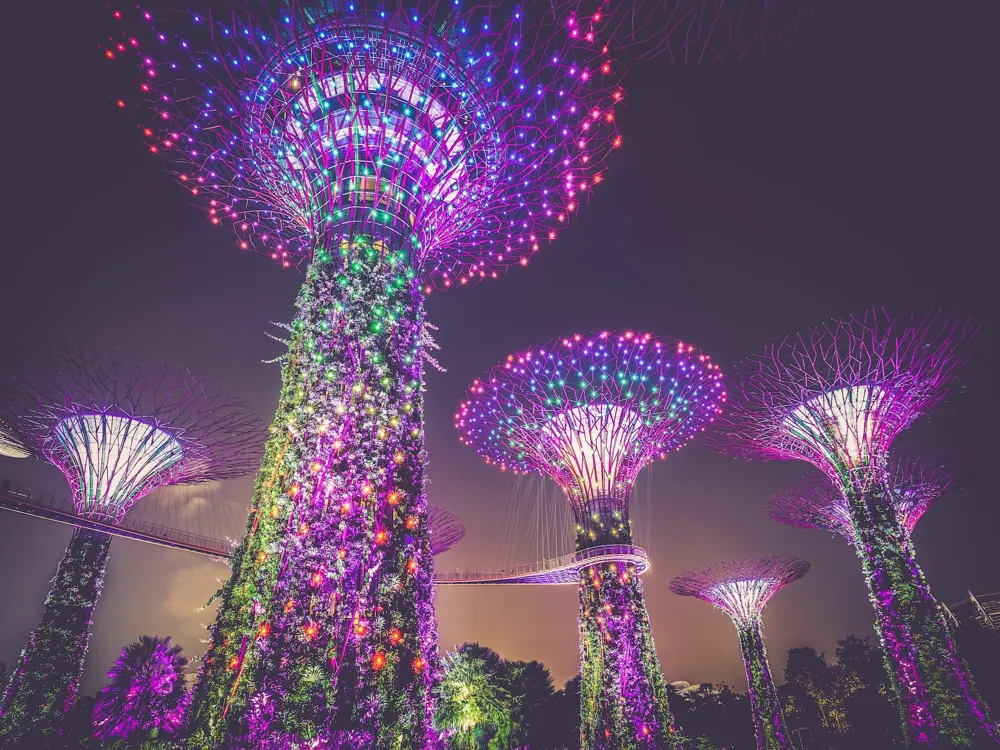
The Tiger Brewery is one of the most famous breweries in Singapore that claim to brew the town's most iconic beer with mere four high-quality ingredients. This brewery is most visited for its beer-brewing tours where the visitors can see beer being made from its raw form, all the way from milling the malt to packaging. It also lets the visitors watch the filling and packing process of beer from a distance and lets them taste beer even before it is fermented for alcohol, called "wort".
Visitors find it fascinating to watch the beer transforming through various stages and sink in the aroma. Followed by this is a cosy, cheerful car room where one gets a large glass of Tiger Beer and a shot glass to sample the various types of beers they produce. All of this is complimentary within a 30 minute limit from entering the bar, after which one may buy the beer. Visitors also get a bottle of the freshest Tiger Beer to take home with them. The entire bar area is adorned with badges if the units which were stationed in Singapore and which military personnel visited this place frequently. The tour has a souvenir shop at the end which the visitors are very fond of. It offers unlimited free tastings to its visitors up to 6:30 PM.
Read More
Singapore Travel Packages
View All Travel Packages Singapore
Nearby Places Singapore
Browse Package Collections
Browse Hotel Collections











